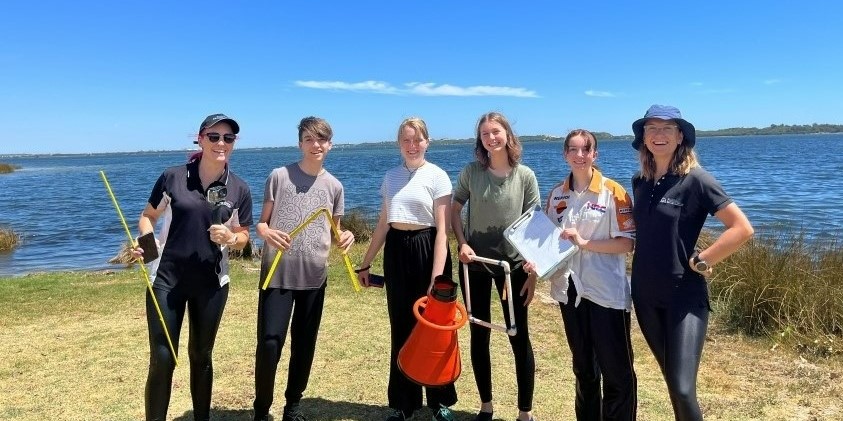
The students from Manea Senior College were excited to learn how to identify the seagrasses and macroalgae growing in their local estuary. With our scientists Caitlyn O’Dea and Charlie Jones as guides, they were able to tackle scientific challenges and design a study of the seagrass.
Manea Senior College science teacher Lynette Hillier said the opportunity provided by the department was “exceptional for students”.
“Not only did they enjoy learning about the importance of seagrass in a practical aspect, but they were able to experience the practical skills utilised by research scientists in the field,” Lynette said.
“The research scientists helped the students understand the importance of this local resource and its need for monitoring, while also providing valuable insights into diverse roles within marine science, which may inspire some students to pursue careers in the field.”
About seagrasses
As an international day of recognition, World Seagrass Day aims to raise awareness about the significance of seagrass habitats and the growing need for their protection and conservation.
Seagrasses are flowering plants that complete their whole life cycle underwater. Globally, seagrasses are found on every continent except Antarctica and play a critical role in the coastal and estuarine environments.
These incredible plants provide habitats and nurseries for an array of animals, support fisheries, improve water quality and stabilise shorelines, yet close to 30 per cent of the world’s seagrasses have already been lost because of threats including climate change, habitat loss and pollution.
Seagrasses are very effective at storing carbon, so their protection and restoration also supports climate action.
Annual summer seagrass surveys
Our seagrass team has been very busy this summer, assessing seagrass condition in the Leschenault Estuary and Hardy and Wilson inlets. As part of the State Government’s Healthy Estuaries WA program, the monitoring work is done from boats using underwater cameras, supplemented by observations from kayaks and drones for shallow waters.
Across these three estuaries, our seagrass team has made 554 observations by boat and 126 observations by kayak throughout the summer season. Working with our regional measurement team, drone imagery was also collected in two of these estuaries.
The seagrass team will collate this data in the coming months to produce seagrass snapshots to update the community and other management agencies on the condition of seagrass habitats.
To learn more about seagrass and its importance, visit our seagrass page.
To read about the findings of our seagrass monitoring, see our seagrass snapshots.
Pictured left to right: Manea Senior College teacher Lynette Hillier and students with DWER scientist Caitlyn O'Dea.


